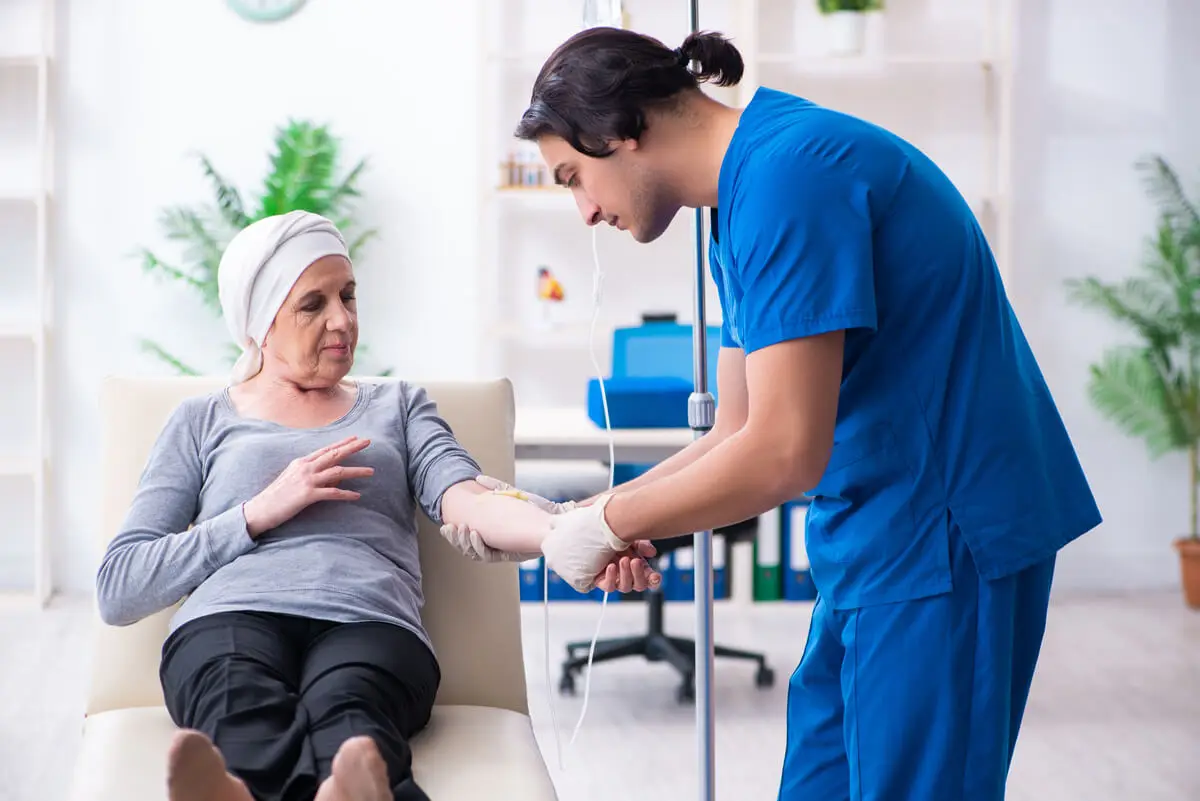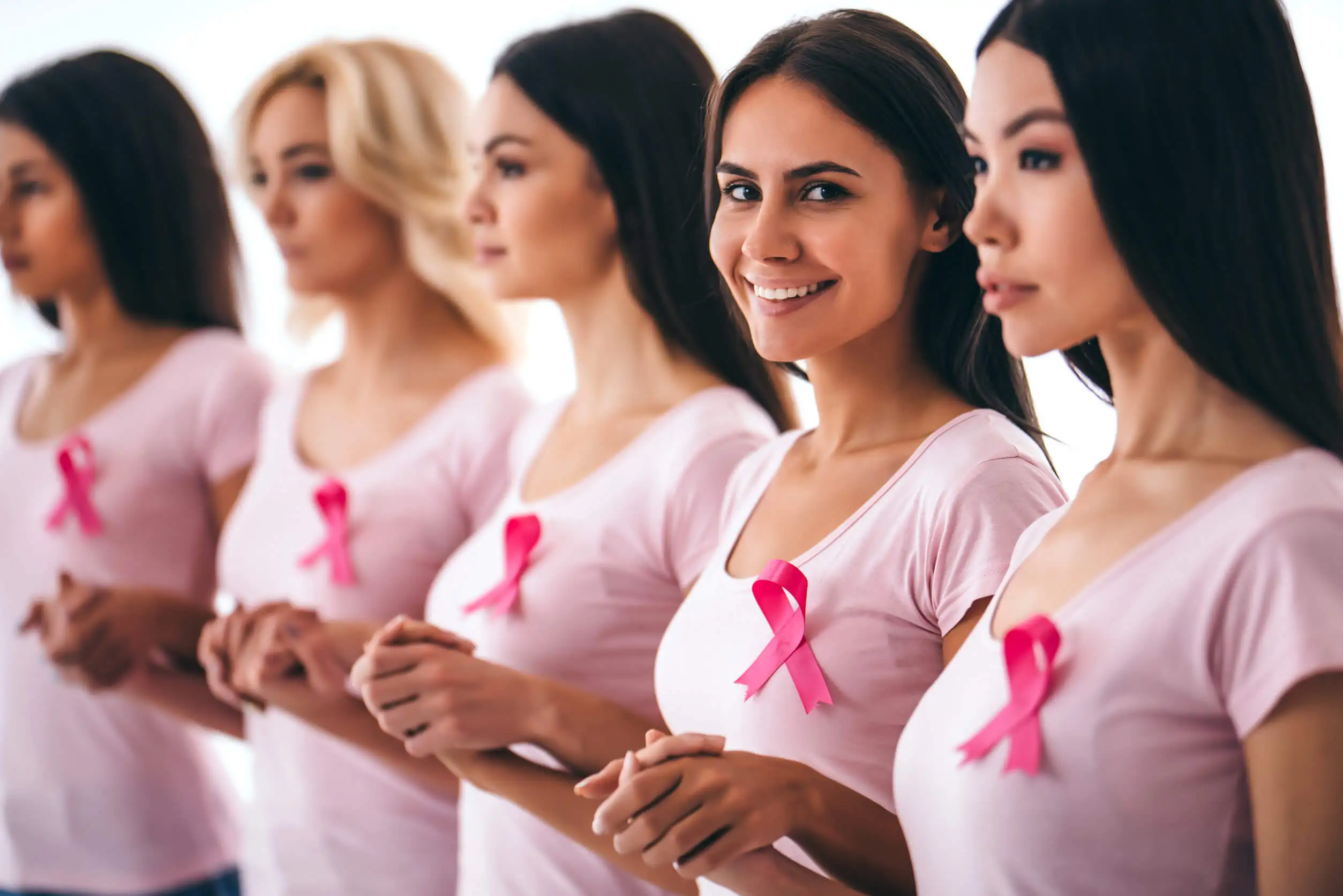Chemotherapy for Breast Cancer: Types and Stages

Chemotherapy for breast cancer is a treatment that uses powerful drugs to attack cancer cells. Sometimes it’s used to cure the disease, and sometimes it’s used to prevent the disease from spreading or to relieve symptoms.
Some people can be treated with only one type of breast cancer chemotherapy. However, it’s more common for several types to be used simultaneously, in combination with other approaches.
It’s usually given intravenously or orally. Sometimes there are fears about side effects. However, everything can be overcome with patience and care.
Why is chemotherapy indicated for breast cancer?
All cells in the body divide to grow or repair damage and this is normal. Cancer occurs when some cells begin to divide and grow uncontrollably. This causes a clumped mass to form, known as a tumor.
Chemotherapy for breast cancer is one of the ways to treat the problem. What is achieved with this method is to interrupt the overflowing increase of fast-growing cells.
Some of the drugs used have the potential to damage the genetic material of the fast-growing cells. Others alter the rate at which the cells divide.
It must be said that not everyone with this diagnosis will need chemotherapy for breast cancer. Each case is unique and sometimes surgery or radiation is more effective.
How is it given?
Chemotherapy for breast cancer can be given in a doctor’s clinic, a specialized center or a hospital. Most commonly, it’s given intravenously, as an injection that lasts a few minutes or as an infusion that takes longer.
In many cases, a larger, sturdier device is needed to perform the infusion. Such devices are called central venous catheters (CVC) or are also known as central venous access devices or central lines. They can be of various types.
Chemotherapy for breast cancer is given in cycles of 2 to 3 weeks, followed by a rest period for the patient to recover from side effects. However, this may vary depending on the drugs used.
For early stage cancers, treatment may take 3 to 6 months. If the cancer is advanced, more time may be required. But it all depends on the condition of each patient and the drugs that are prescribed.

Chemotherapy for breast cancer in different stages
Chemotherapy for breast cancer varies, depending on the stage of the disease. In general, there’s one type of treatment for stages I and II; while another plan is applied for cancers that are stage III.
Read more here: BRCA-1 and BRCA-2 Genes and Breast Cancer
Stage I chemotherapy
Stage I breast cancer is localized and hasn’t spread to the lymph nodes, or has spread minimally. The first-line treatment in these cases is surgery, either conserving the breast or complete removal of the breast.
Radiation therapy is commonly given afterwards. However, in some cases, chemotherapy is also necessary. In particular, it is indicated when the tumor is more than 1 centimeter wide or has unfavorable characteristics.
In these cases, we speak of adjuvant chemotherapy. It can also be performed before surgery, when it’s considered that this option will increase the success of the intervention. Thus, it would be called neoadjuvant chemotherapy.
Read more here: How the Immune System Fights Cancer
Stage II chemotherapy
Stage II cancers are slightly larger than the above and have spread to a few lymph nodes adjacent to the breast. A similar protocol is followed in these cases as for stage I cancers, but it’s usually more common to use chemotherapy prior to surgery.
This procedure causes the tumor to shrink somewhat prior to surgery, thus increasing the likelihood of being able to preserve the breast to a greater degree. However, it doesn’t affect survival rates.
It’s also possible that chemotherapy for stage II breast cancer may be given after surgery or before and after surgery. To find out which is the best alternative, a test such as the DX oncotype is used.
Stage III chemotherapy
Stage III breast cancer is characterized by the presence of a large tumor, larger than 5 centimeters. It has also spread to many of the adjacent lymph nodes or to nearby tissues, such as the skin over the breast or the muscle underneath.
In these cases, neoadjuvant chemotherapy or chemotherapy prior to surgery is very common. As already explained, the objective is to reduce the size of the tumor, so as to increase the probability of preserving the breast. If the tumor isn’t sufficiently reduced, a radical mastectomy or total removal will be necessary.
Sometimes chemotherapy for breast cancer may also be required after surgery, sometimes for up to a year. There are also cases in which treatment is started with surgery and then chemotherapy is performed.

The criteria for chemotherapy for breast cancer
Although chemotherapy for breast cancer generates a series of side effects that can be very unpleasant, it’s also true that it offers important benefits for the treatment of the disease.
In general, it’s considered a good option based on the following criteria:
- Large and higher-grade cancer. They tend to recur and chemotherapy helps to avoid this risk.
- Extension to lymph nodes. In this condition, it’s usually recommended.
- Younger people with aggressive cancers.
- Health status. The presence of heart disease, diabetes and other conditions limits or conditions chemotherapy.
- HER2 level. This measurement is used to classify the severity of the cancer.
- Patient preferences. The woman’s opinion counts.
Fewer and fewer adverse effects
Chemotherapy for breast cancer is often intimidating. However, it’s important to clarify that science has come a long way in this area. Because of this, current treatments make side effects much easier to tolerate.
During the treatment, it’s very important to have adequate nutrition, get enough rest and take care of your mental health. All these factors contribute to better results. It’s also advisable to talk to people who have gone through the same situation.
All cited sources were thoroughly reviewed by our team to ensure their quality, reliability, currency, and validity. The bibliography of this article was considered reliable and of academic or scientific accuracy.
-
- Ariza, Y., Briceño, I., & Ancízar, F. (2016). Tratamiento de cáncer de seno y farmacogenética. Revista Colombiana de Biotecnología, 18(1), 121-134. https://dialnet.unirioja.es/servlet/articulo?codigo=5600051
- Carlson, J., & Roth, J. (2013). The impact of the Oncotype Dx breast cancer assay in clinical practice: a systematic review and meta-analysis. Breast cancer research and treatment, 141(1), 13-22. https://link.springer.com/article/10.1007/s10549-013-2666-z
- Khosravi, P., Izarzugaza, Y., Encinas, S., Díaz, V., & Pérez, G. (2008, January). Tratamiento adyuvante en el cáncer de mama operable. In Anales de Medicina Interna (Vol. 25, No. 1, pp. 36-40). https://scielo.isciii.es/scielo.php?pid=S0212-71992008000100010&script=sci_arttext
This text is provided for informational purposes only and does not replace consultation with a professional. If in doubt, consult your specialist.








